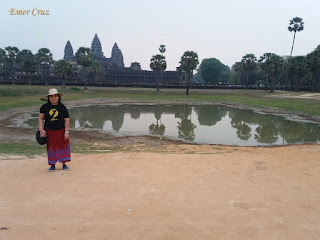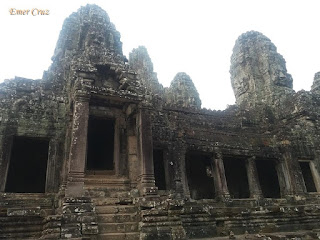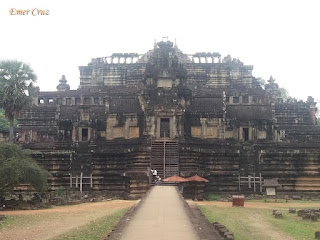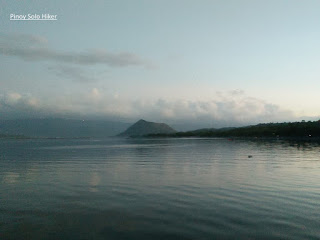Bataan will always have a special place in the pages of Philippine History and it was considered as the first line of defense against the invading Japanese forces. A tribute was made to honor the heroism and gallantry of soldiers which can be found in Mt. Samat where the Shrine of Valor (Dambana ng Kagitingan) was erected to commemorate the Battle of Bataan. Also stood is a 302ft (92m) memorial cross which also serves as a viewing deck.
Mt. Samat is located in the town of Pilar in Bataan with a distance of 135kms from Manila. It has an elevation of 1600ft above sea level and a total elevation gain of 1470ft from Linao National Rd. (Diwa intersection). Although Mt Samat is much smaller than the neighboring mountains, Mt Mariveles and Mt Natib but it's historical significance cannot be discounted. One can easily reach its summit by walking through a cemented road or any means of transportation. I opted to walk the 7kms stretch for about 75mins, all for the love of hiking and sightseeing.
Mt. Samat is located in the town of Pilar in Bataan with a distance of 135kms from Manila. It has an elevation of 1600ft above sea level and a total elevation gain of 1470ft from Linao National Rd. (Diwa intersection). Although Mt Samat is much smaller than the neighboring mountains, Mt Mariveles and Mt Natib but it's historical significance cannot be discounted. One can easily reach its summit by walking through a cemented road or any means of transportation. I opted to walk the 7kms stretch for about 75mins, all for the love of hiking and sightseeing.
"If you want to understand today, you have to search yesterday". ~Pearl Buck
 |
| As viewed from the viewing deck of the memorial cross |
 |
| Inside the memorial cross' viewing deck |
 |
| Mt Mariveles |
1.) Take a bus bound to Balanga, Bataan (Genesis or Bataan Transit), they have terminals in Cubao and Pasay City
2.) Once you are in Balanga Terminal, you can ride a jeep bound to Cabog Cabog (tell the driver to drop you off in the Diwa Intersection
3.) You can then ride a Trike to the Hero Shrine or walk



























